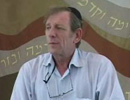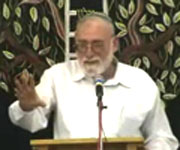40
We have discussed the connection between roots that contain the root-part tzel, such as tzelem (form), hatzala (salvation), and tzela (rib). We will continue in a similar direction. The Pesikta (Lekach Tov, Bereishit I:26) comments: "Tzelem represents the form in which a matter is seen … and it is similar to ‘their shadow has been removed,’ which means that the images of their faces were changed … due to fear." Ibn Ezra turns this homiletic idea into the simple reading of the pasuk: "If a warrior does not have a shield to protect him and be a shadow for him, his heart will be full of fear." The Seforno explains similarly: "They agree to leave all of their offensive and defensive weapons behind to enable them to flee quickly." Thus, we can explain that the Canaanite nations were so fearful of Bnei Yisrael’s expected arrival that they were ready to throw away their weapons and run for their lives.
We find similar imagery in Az Yashir (Shemot 15:14-15) and in Rachav’s description of her compatriots as Bnei Yisrael were approaching (Yehoshua 2:11). However, this approach is difficult because there is no hint at it in the rest of the discussion. We will go in a different direction.
The gematria (numerical value of the letters) of tzelem is 160, which, points out the Shelah, is the same etz (tree). When Moshe spelled out the spies’ mission, one of the matters to determine was whether "there are trees or not" (Bamidbar 13:20). In Hebrew there is also overlap between the words tzel (shadow) and etz. Rashi connects them by saying that both words hint at righteous people, who have a developed tzelem of Hashem and position themselves in the shadow of the Divine Presence. They protect the people of their nation. Therefore Rashi explains that Yehoshua and Kalev were saying that the "shadow of Hashem" had left them, or in other words, the inhabitants of Canaan lost their spiritual, moral protection. In such circumstances, as long as Bnei Yisrael preserved their own spiritual level, they had nothing to worry about.
In the praises of the beloveds in Shir Hashirim, he says that when the tzelalim disappear, he will go to the Mountain of Mor and the Hill of Levona (Shir Hashirim 4:6). The midrash identifies these places as related to Avraham and Yitzchak, who acted piously together on Mount Moriah. In other words, our protection is from our privilege as descendants of the forefathers.
Our patriarchs taught us that Hashem does not want people to sacrifice their children to Him in the primitive manner of other inhabitants of the Land. (Those of our enemies who use their children as human shields to enable them to more easily target civilian populations and then assail Israel for accidentally injuring their civilian population, are cynical people who embrace the lowest tendencies in mankind, and are undeserving of a part of the merit of the righteous.)
May we merit having leaders like Yehoshua and Kalev, who presented an example of morality in the nation and the Land.

Writing a Sefer Torah
Rabbi Yirmiyohu Kaganoff | Tishrei 3 5780

Writing a Sefer Torah
Rabbi Yirmiyohu Kaganoff | Tishrei 3 5780

Some Halachic Ramifications of Wills
Rabbi Yirmiyohu Kaganoff | 5769










